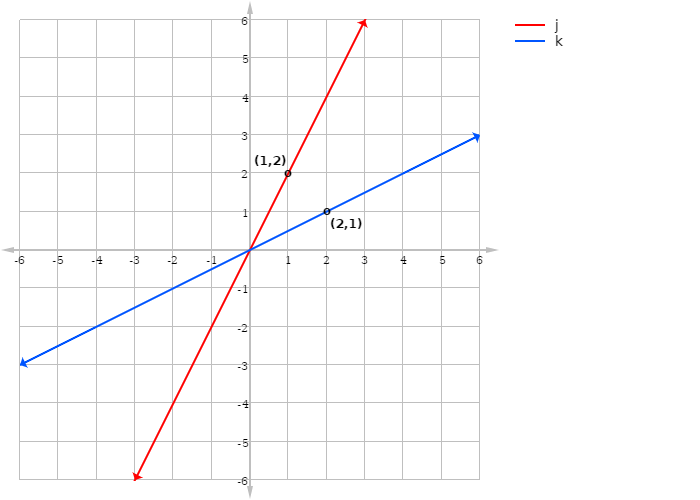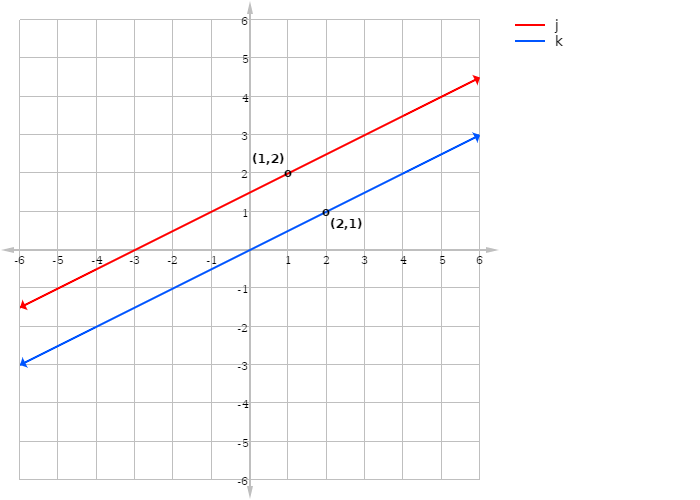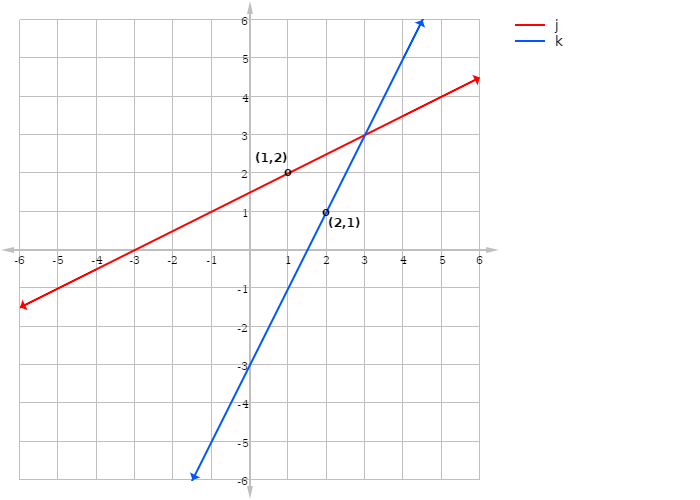This page is part of my unofficial solutions manual to the GRE Paper Practice Book (2e), a free resource available on the ETS website. They publish the questions; I explain the answers. If you haven’t worked through the Practice Book, give Section 6 a shot before reading this!
6.4: To Define a Line
This problem hinges on a basic question about coordinate geometry:
What information is needed to define a line on the xy-plane?
More specifically, we want to know:
Do we have enough information to define lines j and k, and thus to determine the slopes of the two lines?
As is often the case in Quantitative Comparison questions, we’ll need to be careful to separate inferences from assumptions. We may or may not be able to infer the slopes of the two lines from the information provided; if we can’t, we have the option of choosing (D) for “don’t know.” But we have to avoid assuming anything extra that isn’t supported by the problem statement.
Once you recognize what the problem is really asking, you may find that you can answer it without drawing a diagram. If you do diagram, proceed with caution! For many students, the first instinct is to sketch something like this:
where both lines pass through the origin. In this case, the slope of line j is clearly greater than the slope of line k (specifically, mj = 2 and mk = 1/2). But the problem stem doesn’t tell us that the lines pass through the origin: all it says is that j passes through (1,2) and k passes through (2,1). Consequently, the above graph is only one possible interpretation of the problem. We can’t conclude that mj > mk on the basis of this drawing alone.
In fact, it’s also possible to draw lines j and k parallel, while still obeying all of the constraints supplied by the problem:
(Here, mj = mk =1/2.)
We could even, if we wanted to, draw the two lines in such a way that mj < mk:
As you probably suspect by now, we simply don’t have enough information to determine the slopes of lines j and k, which means our answer must be (D). This is because we need two points to define a line, and the problem only gives us one point for each line. If the problem gave us just a little more information (say, that both lines really do pass through the origin), it would be a different story altogether.
Math Review Reference
For more on this topic, see the following section of the GRE Math Review:
- 2.8: Coordinate Geometry (pp. 30-32)


